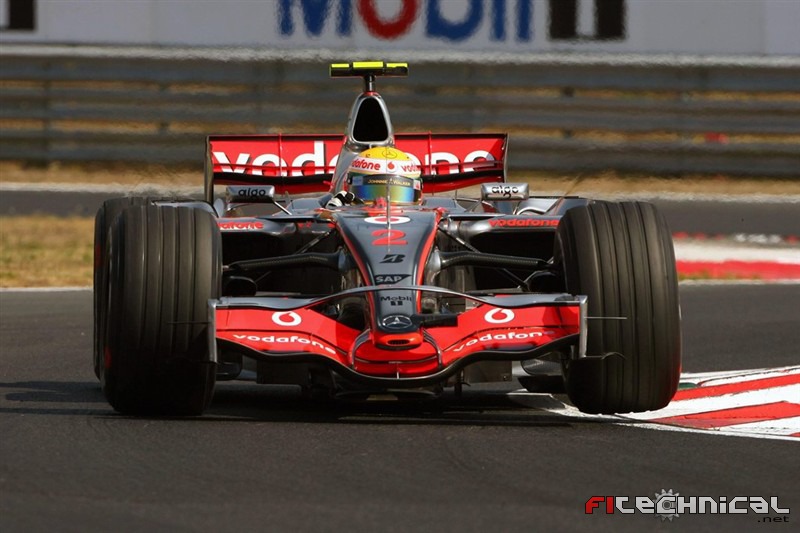- Login or Register
No account yet? Sign up

5.1.4 Fuel mass flow must not exceed 100kg/h.CBeck113 wrote:Here's the answer to the tank size question, taken from BBC:Blackout wrote: I read different numbers. some say 140 liters and some say 100... How much fuel do 2013 tanks carry ?
"Equally, the overall efficiency targets will remain the same - whereas now use of fuel is free, it will be metered from 2014. Currently, cars use about 150kg of fuel (about 195 litres) in a Grand Prix; in 2014, they will be allowed to consume no more than 100kg (130l)."
Servus, Charlie

I did not read the actual regulations - fia website is crapping -, but all other sites say 100kg for race.dren wrote:Fuel is flow limited to 100kg/hr at any rpm above 10500. I don't think there is a limit on actual fuel capacity.


Nopeouter_bongolia wrote:There is one regulation that I do not see, and I am sure would get a lot of noise is car length limits. I would really want to see a maximum length less than 4.2 meters.
The reasons are simple: Shorter cars will be harder to control (better driving),
Nopeharder to get the airflow right (better engineering)
Nopeand easier to pass because it will take less time (better racing).
The tires are the problem of the drivers not going flat out, not the fuel.voidnz wrote:I would love to see re-fueling back in F1.
The only time that the cars are going full potential is qualifying.
I understand the risks involved but after discussing it with my couch I want it back

Uhm. Wrong - given wheelbase changes as well. Assume two cars going at same speeds with front wheels turned at the same angle, but with different wheelbases, guess which one will turn more. Let's say the wheelbase difference is 10%. Then, the directional change will be 11% more for the shorter car (1/0.9, just in case). This will make it easier for the driver of the shorter car to make mistakes and harder to correct the direction when the car is bumping on the kerbs.wesley123 wrote:Nopeouter_bongolia wrote:The reasons are simple: Shorter cars will be harder to control (better driving),
Wrong again. You have to fit more stuff in a smaller volume, which means there will be more possibilities for the flow to get messed up between the wheels. Also there will be less room to get clean air from behind the front wheels.Nopeharder to get the airflow right (better engineering)
Wrong. Very simple math, I will just put simple numbers for you to understand: Assume two cars next to each other with a constant speed difference of 1m/s between two cars. Assume the car being passed is 5 meters long for case 1, and 4 meters long for the second case. It will take 5 seconds to pass in the first case and 4 seconds in the second (math required here). 20% less time passing!Nopeand easier to pass because it will take less time.
Partially right in my non-technical opinion. But I will not go into that discussion here.And also overtaking =/= better racing

? Where did I mention performance? It was all about making the cars a little harder to drive so that we end up enjoying driver skills more.wesley123 wrote:My point was that you are naming things that dont have much effect at all on overall performance.
Nope.The things you name have advantages/disadvantages that are so small they are barely noticable.
Which in turn impacts performanceouter_bongolia wrote:? Where did I mention performance? It was all about making the cars a little harder to drive so that we end up enjoying driver skills more.wesley123 wrote:My point was that you are naming things that dont have much effect at all on overall performance.
They arent really different. I mean, was there really a gain from the 2009 swb cars towards the 2010 lwb cars? There wasnt really a difference.Nope.The things you name have advantages/disadvantages that are so small they are barely noticable.

I disagree. All those things are normal when you unfreeze the engines and make a big change to the power train and chassis. Quite contrary I feel that the challenge will make F1 more lively and more interesting for the technically minded fans like us at F1technical. We will have more issues to discuss beyond arcane aero tweaks. Naturally there will be tyre issues, but you get them every year with Pirelli by design. It is not surprising that the teams once again could not agree on sensible changes to the tyre dimensions in time for next year. Whenever have they managed to agree on anything except when money is concerned or the FiA forces some issues out of pure necessity (like the 2014 turbo engines).FrukostScones wrote:http://www.jamesallenonf1.com/2013/05/g ... re-change/
looks like 2014 is going to be one big mess, engine wise, aero wise and tyre wise....
So with a driver in the car and 100kg´s of fuel that´s near 800kg´s during race starts.1.9 Weight :
Is the weight of the car with the driver, wearing his complete racing apparel, at all times
during the Event.
4.1 Minimum weight :
The weight of the car, without fuel, must not be less than 685kg at all times during the Event.
If, when required for checking, a car is not already fitted with dry-weather tyres, it will be
weighed on a set of dry-weather tyres selected by the FIA technical delegate.
311+366 = 677kg?4.2 Weight distribution :
For 2014 only, the weight applied on the front and rear wheels must not be less than 311kg
and 366kg respectively at all times during the qualifying practice session.
If, when required for checking, a car is not already fitted with dry-weather tyres, it will be
weighed on a set of dry-weather tyres selected by the FIA technical delegate.